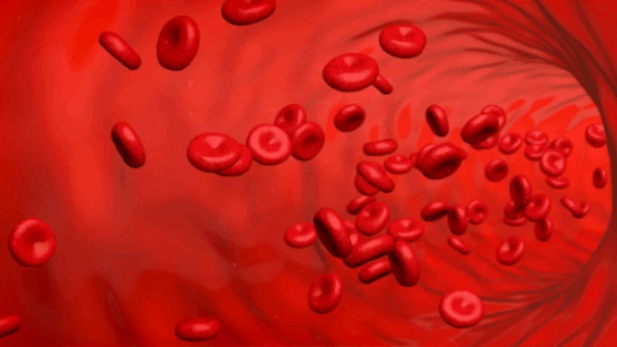Vision is normally such a dependable part of daily life that most people never imagine waking up to find that one eye is suddenly blind. When this happens without pain and the vision loss is instant, it may not be an ordinary eye problem at all—it may be an eye stroke, medically known as retinal arterial occlusion (RAO). An eye stroke occurs when a clot or plaque blocks an artery supplying the retina, the light‑sensing tissue lining the back of the eye. Because the retina is part of the central nervous system, this blockage is essentially a miniature stroke of the eye, and prompt treatment is crucial. Animal experiments and clinical observations suggest that irreversible retinal ganglion cell death may happen extremely quickly—within 12–15 minutes of complete central retinal artery occlusion. That means there is virtually no time to spare: the difference between early intervention and permanent blindness can be minutes, not hours. This in‑depth guide explains what causes an eye stroke, who is at risk, how to recognise the warning signs, why the 15‑minute rule matters, and what treatments and prevention strategies are available.
What Is an Eye Stroke?

An eye stroke, or retinal arterial occlusion, happens when blood flow to the retina is blocked. There are several forms of RAO depending on the artery involved:
- Central Retinal Artery Occlusion (CRAO) – a blockage of the central retinal artery, the main “trunk” that supplies the entire inner retina. CRAO usually causes profound vision loss across the entire eye and is considered the ocular equivalent of a cerebral stroke.
- Branch Retinal Artery Occlusion (BRAO) – blockage of one of the smaller branch arteries, leading to sectoral (partial) vision loss. Symptoms often depend on which branch is affected.
- Transient Monocular Vision Loss (TMVL) – sometimes called amaurosis fugax, this is a temporary retinal ischemia caused by an embolus that resolves on its own within minutes to hours. It serves as an important warning sign for a more serious occlusion.
RAOs are “medical emergencies”. When the retina is starved of oxygen, the delicate ganglion cells and photoreceptors start to die, similar to how brain cells die during a cerebral stroke. The retina cannot regenerate; once a significant number of retinal neurons are lost, vision loss is often permanent.
Anatomy: Why Blood Flow Matters

The retina receives its blood supply from two main systems. The central retinal artery branches inside the optic nerve and nourishes the inner retina, including retinal ganglion cells whose axons form the optic nerve. A separate system of short posterior ciliary arteries feeds the choroid and outer retinal layers (photoreceptors). In central retinal artery occlusion, the inner retina becomes ischemic while the outer retina may still receive some perfusion from the choroid. Because the inner retina is particularly sensitive to a lack of oxygen, irreversible damage occurs quickly. Animal studies suggested retinal neurons survive 90–240 minutes without blood supply, but the experimental conditions (barbiturate anaesthesia, hypothermia) likely extended survival; more recent analysis shows that retinal infarction can occur after only 12–15 minutes of complete arterial occlusion. In other words, the retina behaves like brain tissue—neurons in both tissues begin to die after just minutes without oxygen.
Why 15 Minutes?
Clinical evidence supporting a 15‑minute threshold comes from animal experiments and human case series. In rare cases of complete CRAO, irreversible retinal ganglion cell death is reported within 12–15 minutes. Researchers argue that earlier assumptions of longer survival times (90–240 minutes) were flawed because of protective effects from anaesthesia and residual collateral circulation. As part of the central nervous system, retinal tissue likely follows the same rapid necrosis seen in the brain, where neurons begin to die within minutes of ischemia. Because we cannot easily detect how complete a patient’s occlusion is, practitioners recommend treating any sudden, painless vision loss as an emergency that demands action within 15 minutes. Even partial occlusions that spare the fovea or involve a branch artery can still benefit from prompt care.
Epidemiology: How Common Is an Eye Stroke?
Eye strokes are relatively rare but not vanishingly so. Estimates suggest about 1–2 people per 100 000 population experience central retinal artery occlusion each year, and the incidence rises with age. A Japanese registry found 5.84 cases per 100 000 person‑years, likely due to an older population. Branch retinal artery occlusion is slightly more common at roughly 5 cases per 100 000 person‑years. Even though the disease is uncommon, its consequences are severe: fewer than 20 % of CRAO patients recover useful visual acuity, and the average life expectancy after CRAO is 5.5 years compared with 15.4 years for people without the condition.
RAO Is a Warning Sign for Systemic Vascular Disease
Retinal arterial occlusion is strongly associated with systemic vascular risk factors. Several studies have shown that RAO patients often harbour undiagnosed cardiovascular disease. One study found that 78 % of CRAO patients had at least one newly identified cardiovascular risk factor after diagnosis. Moreover, RAO may precede a cerebral or cardiac stroke: roughly 13 % of patients suffer a subsequent stroke, and nearly half of those strokes occur within four weeks of the eye event. These statistics make eye stroke a potent marker for systemic vascular disease requiring thorough evaluation and preventive care.
Who Is at Risk? Factors You Can and Can’t Change

RAO shares many risk factors with ischemic stroke and myocardial infarction. Understanding these risk factors helps individuals assess their risk and highlights areas for prevention.
Non‑Modifiable Factors
| Risk Factor | Evidence |
|---|---|
| Age | Eye strokes predominantly affect older adults. The incidence increases dramatically after age 60. |
| Sex | Multiple sources note a male predominance. |
| Anatomical variants | The presence of a cilioretinal artery (found in ~20–50 % of individuals) can spare central vision when patent. Although not modifiable, it influences prognosis. |
| Hereditary vasculopathy | Rare familial hypercoagulable conditions may predispose to RAO. |
Modifiable Factors
| Risk Factor | Evidence |
|---|---|
| Hypertension | High blood pressure is one of the most important risk factors. Controlling blood pressure reduces the risk of both RAO and cerebral strokes. |
| Hyperlipidemia and Atherosclerosis | Elevated cholesterol and plaque build‑up in the carotid artery contribute to embolic RAO. |
| Smoking | Smoking damages blood vessels and is linked to higher rates of RAO. |
| Diabetes and Obesity | These conditions predispose to vascular disease and clot formation. |
| Cardiovascular disease | Coronary artery disease, atrial fibrillation, and heart valve abnormalities can shed emboli into the retinal circulation. |
| Hypercoagulable states | Disorders like antiphospholipid syndrome increase clotting risk. |
| Giant Cell Arteritis (GCA) | This inflammatory vasculitis occurs in adults over 50 and can cause arteritic CRAO. It requires immediate high‑dose steroids to save vision. |
Control of modifiable risk factors is the foundation of primary prevention. Lifestyle modifications—healthy diet, regular exercise, and smoking cessation—combined with medical management of blood pressure, lipid levels, and blood glucose reduce both ocular and systemic vascular events.
Recognising the Symptoms: Sudden and Painless Vision Loss

The hallmark of an eye stroke is sudden, painless vision loss in one eye. Patients often describe the loss as a curtain descending over their vision, a dark shadow, or the disappearance of part or all of their visual field. Key features include:
- Speed of onset: Vision loss develops within seconds to minutes.
- Lack of pain: Unlike optic neuritis or migraine aura, RAO does not cause pain.
- Extent of vision loss: In CRAO, vision typically drops to counting fingers or worse; BRAO often causes sectoral field defects or peripheral vision loss.
- Transient episodes: TMVL or embolic events may cause brief episodes of blurred or lost vision lasting seconds to minutes; these are important warnings and require evaluation.
Physical examination by a clinician reveals characteristic signs: a cherry‑red spot at the macula due to the contrast between the ischemic opaque retina and the intact fovea, retinal whitening, narrowed arteries, boxcar segmentation of blood flow, and a relative afferent pupillary defect. In BRAO, these findings may be limited to the affected vascular territory.
Why Every Minute Matters: The 15‑Minute Emergency
The retina’s tolerance for ischemia is brief. Without blood supply, retinal ganglion cells begin dying after 12–15 minutes. Even partial occlusions can cause significant damage if not promptly reversed. Several lines of reasoning underscore why you should seek help immediately:
- Irreversibility of Neural Damage: Retinal neurons are central‑nervous‑system tissue. Like brain neurons, once they die, they do not regenerate.
- Ineffectiveness of Late Therapy: Traditional treatments (ocular massage, IOP‑lowering medications, hyperbaric oxygen) have limited evidence for benefit once cell death has occurred. Even experimental therapies like thrombolysis are only effective when administered within hours, not days. A 2023 meta‑analysis suggested improved outcomes when intravenous tissue plasminogen activator (tPA) was given within 4.5 hours, but the number needed to treat was around four and serious complications were possible.
- Opportunity to Prevent a Stroke: Because RAO often signals underlying vascular disease, early presentation allows doctors to identify carotid stenosis, atrial fibrillation, or hypercoagulable disorders and initiate preventive therapy.
Don’t Wait for an Ophthalmology Appointment—Call Emergency Services
One of the major problems identified in observational studies is delayed presentation. In a 2024 review, the average time from symptom onset to medical review was 31.2 hours, with only 32 % of patients seeing an ophthalmologist initially. Even though awareness is improving, more than half of patients did not seek care within 4.5 hours. Considering the 15‑minute window for retinal survival, these delays are disastrous. Anyone who experiences sudden, painless vision loss should call emergency medical services immediately and report a possible stroke of the eye. Early arrival at a stroke‑equipped hospital or eye stroke centre facilitates rapid evaluation and access to treatments like thrombolysis or referral to hyperbaric oxygen therapy when available.
Diagnostic Work‑Up
Evaluation of RAO mirrors the work‑up for cerebral stroke and involves both ocular and systemic assessments.
- History and Eye Examination: Documenting the exact time of vision loss is essential. Ophthalmologists perform visual acuity testing, confrontational visual fields, pupillary examination, and dilated funduscopy to look for retinal whitening, cherry‑red spot and emboli.
- Optical Coherence Tomography (OCT): OCT reveals hyperreflectivity and edema of the inner retinal layers in acute CRAO. In severe cases, there may be intra‑retinal fluid, neurosensory detachment, or hyperreflective dots. OCT angiography shows reduced capillary perfusion.
- Fluorescein Angiography (FA): FA may reveal delayed arterial filling and boxcar segmentation; choroidal filling remains normal in non‑arteritic CRAO but is delayed in arteritic or ophthalmic artery occlusion.
- Imaging for Stroke: When symptoms began within 4.5 hours, a non‑contrast head CT is recommended to rule out intracranial haemorrhage before considering thrombolysis. Brain MRI with diffusion‑weighted imaging may detect silent cerebral infarcts in up to 30 % of RAO patients.
- Laboratory Tests: For patients over 50 with systemic symptoms such as jaw claudication, ESR and CRP are checked to rule out giant cell arteritis. A complete blood count, coagulation profile, fasting lipid panel, HbA1c, and inflammatory markers help evaluate cardiovascular risk.
- Cardiac and Vascular Imaging: Duplex ultrasound, CT angiography or MR angiography assess the carotid arteries, as 37–40 % of RAO patients have significant ipsilateral carotid stenosis. Echocardiography and Holter monitoring may uncover cardiac sources of emboli.
Treatment: What Can Be Done?

Despite decades of attempts, there is no universally accepted, evidence‑based therapy for CRAO. Nevertheless, the following strategies are used in practice, with varying degrees of evidence.
Supportive Measures and Conservative Therapies
- Immediate Ocular Massage: Applying intermittent pressure to the eye may dislodge an embolus and temporarily increase arterial perfusion. The technique uses a 3‑mirror Goldmann lens or digital pressure for 10 seconds followed by release. Evidence is limited and inconclusive.
- Lowering Intraocular Pressure (IOP): Systemic acetazolamide, intravenous mannitol, and topical beta‑blockers are used to reduce IOP and hopefully facilitate perfusion.
- Anterior Chamber Paracentesis: Removing 0.1–0.2 mL of aqueous humor via needle aims to reduce pressure and dilate retinal arteries. However, a study of 74 patients found no added benefit and risk of ocular injury.
- Inhalation Therapies: Breathing carbogen (95 % oxygen/5 % carbon dioxide) or hyperventilation into a paper bag may induce vasodilation. Studies did not demonstrate clear benefit.
- Pentoxifylline and Vasodilators: Agents such as pentoxifylline and sublingual isosorbide dinitrate have been used to reduce blood viscosity and dilate vessels, but evidence is weak.
- Supplemental Oxygen and Hyperbaric Oxygen Therapy: Hyperbaric oxygen therapy (HBOT) involves breathing pure oxygen under pressure and may increase oxygen tension in the retina. It should be started within 8 hours of symptom onset and may improve outcomes in some patients. The therapy is resource‑intensive and available only in specialised centres.
Thrombolytic Therapy
Given the embolic nature of many RAOs, thrombolysis is a logical approach. Evidence is evolving:
- Intravenous Thrombolysis (IV tPA): Administration of tissue plasminogen activator within 4.5 hours of vision loss has shown improved visual recovery in retrospective analyses. A meta‑analysis reported better outcomes compared with natural history when treatment was delivered within 4.5 hours. The American Heart Association recommends considering IV tPA for non‑arteritic CRAO when no contraindications exist. However, serious bleeding complications remain a concern.
- Intra‑Arterial Thrombolysis (IAT): Catheter‑based delivery of thrombolytic agents directly into the ophthalmic artery can be attempted within 6 hours of onset. Trials have shown similar efficacy but higher risk compared with IV therapy.
- Mechanical or Endovascular Approaches: Mechanical thrombectomy is not feasible because of the small diameter of the central retinal artery. Laser embolectomy and vitrectomy to remove visible emboli have been reported in case series but carry risks of vitreous hemorrhage.
Treating Giant Cell Arteritis
In arteritic CRAO caused by giant cell arteritis, vision loss often occurs in both eyes within hours or days. Emergency high‑dose steroids (e.g., 1 g intravenous methylprednisolone daily for 3 days) are mandated, followed by long‑term oral steroids. A temporal artery biopsy should be performed within two weeks of starting steroids.
Secondary Prevention
Regardless of the treatment for the eye event, RAO patients require stroke‑like secondary prevention. This includes anti‑platelet or anticoagulant therapy depending on underlying conditions, management of blood pressure and cholesterol, smoking cessation, diabetes control, weight reduction, and sometimes carotid endarterectomy or stenting for significant carotid stenosis. Working with a multidisciplinary team—ophthalmologist, neurologist, cardiologist and primary care physician—ensures comprehensive care.
Prognosis
The visual prognosis depends on the type of occlusion, timing of intervention and presence of collateral circulation. In CRAO, up to 80 % of patients have final visual acuity of 20/400 or worse. Some patients with a patent cilioretinal artery may retain central vision but lose peripheral fields. BRAO usually results in a sectoral defect, and about 80 % of patients recover to at least 20/40 vision. Vision loss can be accompanied by complications such as neovascularisation of the iris and secondary glaucoma if ischemia stimulates new vessel growth.
Beyond vision, RAO is associated with significant mortality. Patients have a life expectancy of only 5.5 years compared with 15.4 years for matched controls, likely due to systemic vascular disease. Therefore, survival and quality of life depend on aggressive management of underlying risk factors and prevention of systemic strokes.
Living With and Preventing Eye Strokes
Because RAO is often the first sign of systemic vascular disease, lifestyle modifications and regular medical care can reduce risk:
- Control Blood Pressure and Cholesterol: Maintaining blood pressure below 130/80 mmHg and LDL cholesterol within recommended limits reduces atherosclerotic plaque formation.
- Quit Smoking: Smoking cessation programs and nicotine replacement therapy significantly lower risk.
- Manage Diabetes: Keeping HbA1c below 7 % prevents vascular complications.
- Maintain a Healthy Weight and Exercise: Regular aerobic exercise and weight control reduce hypertension and insulin resistance.
- Regular Eye and Medical Check‑Ups: Eye exams can detect subtle retinal changes or emboli. Cardiovascular screening may uncover silent carotid stenosis or atrial fibrillation.
- Seek Immediate Care for Vision Changes: Episodes of transient blurred vision or “curtains” should prompt a medical evaluation, even if vision returns quickly. They may signify TMVL and provide a chance to prevent permanent vision loss.
Future Directions and Research

Research into eye stroke management is active. Ongoing areas include:
- Improved Imaging: Wider use of OCT angiography could help stratify patients and monitor reperfusion in real time.
- Novel Thrombolytics and Delivery Systems: Trials are exploring tenecteplase and other agents with faster clearance or fewer bleeding risks. Catheter‑directed microinfusion into the ophthalmic artery aims to enhance local effect while reducing systemic exposure.
- Neuroprotective Agents: Drugs that protect retinal neurons during ischemia are under investigation. By prolonging the window before irreversible damage, these could complement reperfusion therapies.
- Public Health Campaigns: Many patients delay care because they do not recognise ocular stroke symptoms. Campaigns similar to FAST (Face, Arms, Speech, Time) for brain strokes could teach people to treat sudden vision loss as a “911” emergency. Eye hospitals and primary care networks are also implementing rapid referral pathways to reduce delays.
Conclusion: Don’t Ignore Sudden Vision Loss
An eye stroke is a devastating, time‑critical condition. The retina’s vulnerability means irreversible damage can occur within 12–15 minutes of occlusion. Because we cannot know in advance whether an occlusion is complete or partial, any sudden, painless loss of vision should be treated as an emergency. Calling emergency medical services promptly ensures quick evaluation, possible thrombolysis or hyperbaric oxygen, and, critically, an opportunity to uncover and treat the systemic vascular conditions that caused the event. Prevention remains paramount—managing blood pressure, cholesterol, and diabetes; quitting smoking; exercising; and adhering to medication can reduce risk. For patients who experience an eye stroke, multidisciplinary follow‑up is essential to protect the fellow eye and overall health. Awareness of the 15‑minute rule could be the difference between lasting vision and permanent blindness, and may even save a life by preventing a future cerebral stroke.

